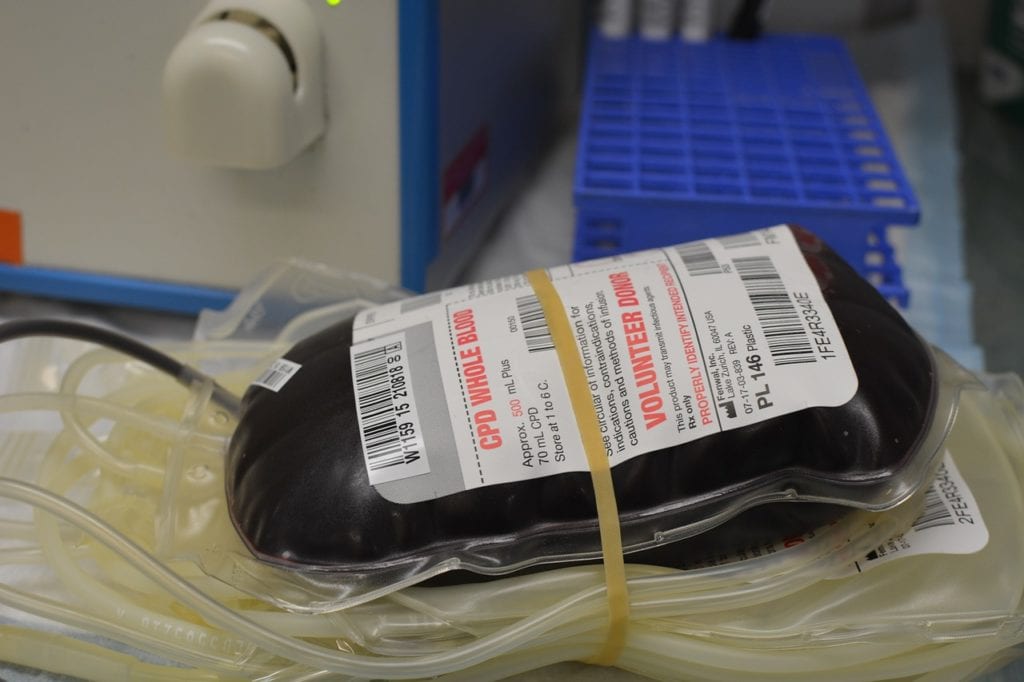In a recent press release, immuno-oncology and biopharmaceutical company GT Biopharma, Inc. (“GT”) shared the release of new data and results from the Phase 1/2 GTB-3550 TriKE clinical trial. Through this trial, researchers are evaluating GTB-3550 for patients with either high-risk myelodysplastic syndromes (MDS) or refractory/relapsed acute myeloid leukemia (AML).
GTB-3550
So what is GTB-3550? Also known as GTB-3550 TriKE, the therapeutic candidate was developed using GT’s proprietary NK (natural killer) cell engager protein biologic technology platform. Altogether, GTB-3550 is an scFv recombinant fusion protein conjugate which uses parts of anti-CD16 and anti-CD33 antibodies. Additionally, GTB-3550 uses modified interleukin-15 (IL-15), which helps activate and strengthen natural killer cells. According to the British Society for Immunology:
Natural Killer (NK) cells are lymphocytes in the same family as T and B cells, coming from a common progenitor. NK cells are best known for killing virally infected cells, and detecting and controlling early signs of cancer.
In this case, GTB-3550 would be able to improve the function of NK cells which were not working as well as they could be, using those to directly attack cancerous cells. The treatment is used as a monotherapy, meaning it is not used in conjunction with any other therapies to control AML or MDS. Additionally, patients do not need to have been previously treated with specific therapies in order to use GTB-3550. So far, 9 patients have received this therapy. During this treatment, researchers saw a high response rate; a significant reduction in cancerous cells in the bone marrow; and an increase in natural killer cell function. The clinical trial is still enrolling. Want to learn more? Click here.
Myelodysplastic Syndromes (MDS)
Altogether, myelodysplastic syndromes (MDS) consist of a group of conditions characterized by too few platelets, white blood cells, and red blood cells in the bone marrow. In patients with MDS, these cells never mature. Rather, they lead short lives or never exit the bone marrow. While doctors are not sure of the exact cause of MDS, potential triggers include radiation and chemotherapy, as well as chemical exposure. Additional risk factors include age (60+) and being male.
Overall, five subtypes of MDS exist: refractory anemia, refractory anemia with sideroblasts, refractory anemia with excess blasts, refractory anemia with excess blasts in transformation, and chronic myelomonocytic leukemia. In around half of all diagnoses, regardless of subtype, MDS progresses and becomes acute myeloid leukemia. In early stages of MDS, many patients may be asymptomatic. Later symptoms include:
- Anemia (low red blood cell count)
- Neutropenia (low white blood cell count)
- Thrombocytopenia (low platelet count)
- Frequent infections
- Fatigue and lethargy
- Chest pain (potentially with heart palpitations or abnormal heart rhythms)
- Pallor (pale skin)
- Easy bruising and bleeding
- Difficulty breathing
Acute Myeloid Leukemia (AML)
Sometimes known as acute myelogenous leukemia, acute myeloid leukemia (AML) forms in the bone marrow, or the soft and spongy tissue inside of bones. Normally, healthy blood cells are created in bone marrow. But in patients with AML, the bone marrow creates abnormal platelets, red blood cells, and a type of white blood cell called myeloblasts. Because too many of these abnormal cells form, healthy cells are crowded out, causing negative health effects. Much like MDS, AML is more common in males than females. While it can occur in people of all ages, the risk increases with age. Smoking also increases the risk of developing AML. Symptoms include:
- Easy bruising and bleeding, alongside unusual and frequent bleeds
- Pallor
- Frequent infections
- Appetite loss
- Night sweats
- Fatigue and lethargy
- Unintended weight loss
- Fever
- Bone pain
- Shortness of breath and/or difficulty breathing







